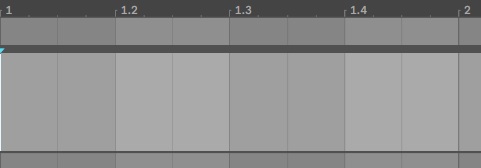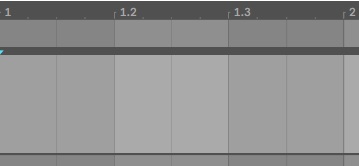Understanding meter is essential when it comes to laying the rhythmic foundations of your track. Although in this day and age most music is in 4/4 time – and this is especially true in electronic music styles – being familiar with other meters can help you write better music. In fact, numerous examples of electronic music in diverse time signatures can easily be found. In this article, we’ll break meter down into simple terms. We’ll also provide you with some examples of songs that break with the conventional 4/4 meter, in the hope that they will serve as a source of inspiration and encourage you to further explore different rhythmic options for your music.
Before we go any further, let’s review what is meant by meter and time signature. Even though both concepts are often used interchangeably, they have slightly different meanings. Simply put, meter is the rhythmic structure of the music in terms of the subdivision of the beat and the location of accents in a bar, whereas time signatures are the notations that we use to describe meter in terms of beat duration and bar length. Let’s examine these concepts more closely.
If you want to learn how to work with vocals after learning about time signatures you have to check out this free masterclass chapter on vocals from legendary hip hop producer the alchemist!
What is a time signature?
The time signature dictates the number of beats in each bar, which is defined by the numerator, and the duration of each beat, which is defined by the denominator. For example, in 4/4, bars are broken down into four beats and each beat equals a quarter note in length. Likewise, in 2/4 and 3/4, bars are broken down into two and three quarter note beats respectively.

Picture 1 – 2/4, 3/4 and 4/4 time in musical notation
By default, in all DAWs the time signature is initially set to 4/4 due to the prevalence of this meter in most music. In Ableton Live, you can change the time signature of your project in the Control Bar, next to the Tempo Control functions.
![]()
Picture 2 – The Control Bar in Ableton Live
The time signature of your project specifies the organization of the grid. In 4/4, the grid is divided into 4-beat bars whereas in 3/4 it’s divided into 3-beat bars. Similarly, you can also shorten or extend the length of bars by changing the duration of each beat. When the denominator is set to 4, the beat is equal to a quarter note in length. When it’s set to 2, each beat is equal to a half note, and when it’s set to 8, each beat is equal to an eighth note.

Picture 3 – The grid in 4/4

Picture 4 – The grid in 3/4
Most DAWs allow you to change the time signature of your track at any point of your project. In Ableton Live, this can be done by adjusting the time signature values of each scene in the Master track in Session view, or inserting a time signature change by right clicking the top part of the grid in Arrangement view.

Picture 5 – Time Signature Change in Arrangement View

Picture 6 – Time Signature Change in Session View
What is meter?
Understanding how time signatures work is important because they specify how we organize music into beats and bars. By themselves, however, they don’t enable us to tell the difference between contrasting rhythmic structures. For instance, if we only take time signatures into account, twelve beats in 2/4, ¾ and 4/4 at the same tempo would sound exactly the same in spite of being organized in bars of different lengths. This is where the notion of meter comes in handy because it allows us to describe the grouping of notes and the subdivision of beats in a particular time signature, as well as the placement of strong beats within a bar. In a nutshell, understanding meter allows us to differentiate between time signatures.
Example 1 – Simple meters: 2/4, 3/4 and 4/4
Therefore, a particular meter can be identified by the location of a recurring stressed beat, also known as an accent. As you can hear in the examples, each time signature has a distinct placement of strong beats which gives each of them its characteristic rhythmic feel. Thus, f we feel an accent every 2 beats, we’re in duple meter; if we feel an accent every 3 beats we’re in a triple meter; and if we feel an accent every 4 beats (with a medium-weight accent on the third beat) we’re in a quadruple meter.
2/4, 3/4 and 4/4 are all examples of simple meters. However, meters can also be compound, meaning that each beat of the bar is subdivided into threes instead of twos. 6/8 and 12/8 are two examples of compound meters. Although they are related to 3/4, the main difference lies in the ternary rather than binary subdivision of the beat as well as in the location of accents within a bar.
Example 2 – Compound meters: 6/8 and 12/8
Odd time
Knowing about simple and compound meters allows us to jump into more complex time signatures. For instance, 5/4, 7/4 and 7/8 are examples of irregular meters, also known as odd time. Despite seeming more complex, if we break these meters down they can be thought of as “mixed” because they can be put together using groups of twos and threes.
For example, 5/4 can be understood as a simple duple meter followed by a simple triple meter or viceversa.
Example 3 – Odd time: 5/4
Likewise, 7/4 can be broken down into any combination of two simple duple meters and a simple triple meter, or a triple and a quadruple meter.
Example 4 – Odd time: 7/4
Similarly, 7/8 can be broken down into two simple meters and a compound meter.
Example 5 – Odd time: 7/8
In short, any complex time signature can be broken down into groups of twos and threes.
if this is all still a bit confusing, this full masterclass on the fundamentals of music production will up your level on music language and theory for making music
Alternatives to 4/4 in electronic music
Now that we’ve overviewed different meters and time signatures, we’re ready to discuss alternatives to 4/4 time in electronic music so that you can apply them creatively in your own music. Even though most music nowadays is in 4/4, other meters are still very much alive and kicking in various electronic music styles. Let’s look at some examples:
British producer Dave Tipper creates music that could be classified as Trip Hop and often uses alternative time signatures to 4/4. This example is in ¾ but his work is filled with other meters such as 7/8.
In this song, Jay Z mixes classic soul influences with a bolero rhythm in 6/8 which results in an addictive beat that demonstrates that Hip Hop is not restricted to 4/4.
“Raining Melodies” by Dutch producer Frontliner shows that ¾ time signatures can be applied to straight beat styles such as EDM without losing any dance drive.
Aaron Funk, known as Venetian Snares, is a Canadian producer who has pushed the boundaries of electronic music with his use of odd time signatures and complex drum patterns. This track evolves from a classical music sounding piece to an epic drum and bass track in 7/4.
Experimental music duo Autechre are also well known for often taking electronic music styles beyond 4/4 time. This song, which revolves around what seems like a simple, sober synthesizer line on top of a complex drum pattern, is another good example of 7/4 time in electronic music.
Automating time signature changes is also an effective way of breaking with 4/4 time and adding excitement to your music as it can allow you to play with your listener’s expectations and disrupt their perception of rhythm. Here are some popular songs that cleverly employ time signature changes:
The structure of this pop hit consists of a 6-bar loop which misleadingly sound like 4/4 time but in reality the fourth bar of the progression is in 2/4. This shows that even a subtle time signature change can significantly alter the feel of a rhythm and make it more engaging.
In a similar fashion, this classic track by electronic music duo The Chemical Brothers alternates between 4/4 and 6/4 between the verse and the chorus. This change goes almost unnoticed but effectively adds interest to the song.
Again, this is another song that seems like it’s in 4/4, but in fact the rhythmic pattern consists of three bars in 4/4 and one bar in 2/4 (which could also be thought of as a 14/4 loop). Despite this asymmetrical meter change, the song manages to have a compelling, organic groove.
Train your ear
Train your ear to identify meter by counting along and paying attention to how notes are organized in music. Find examples of songs that use alternative time signatures to 4/4 and try to transcribe their rhythm patterns. Experiment with odd time and meter changes in your music. All in all, exploring different meter possibilities can help you achieve more interesting and unique results.






 50 Industry Music Production Tips You Must Know
50 Industry Music Production Tips You Must Know




